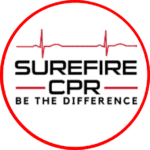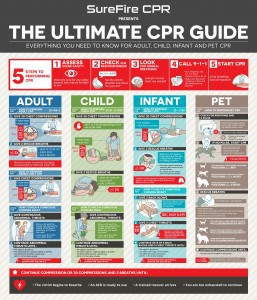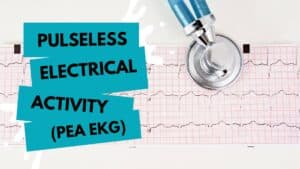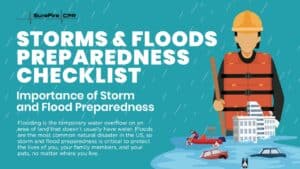With the Covid-19 pandemic and an era of social distancing, it can be difficult to know what to do in a medical emergency situation. Whether we’re first responders or simply bystanders hoping to help, we want to help others while also minimizing the spread of illness.
One common point of confusion is whether mouth-to-mouth is still appropriate when administering CPR. In this article, we’ll explore this question so that you’re ready to help in the event of a sudden cardiac arrest (SCA) or a cardiac emergency.
The Traditional Approach to CPR
If you’re not familiar with CPR, you may only know what you’ve seen on TV: nurses, lifeguards, or frantic bystanders huddled over a patient, trying to help them regain consciousness. They often use mouth-to-mouth resuscitation, a CPR technique in which the responder forces a breath into the victim’s mouth.
Mouth-to-mouth resuscitation, also known as “rescue breaths”, was used as early as 1740. To give a rescue breath, the rescuer would tilt the victim’s head back, pinch their nose, and then create a seal over the victim’s mouth. The rescuer would blow into their mouth to create a simulated breath, enough that the victim’s chest would rise with the breath.
The Updated Approach to CPR
Now, the American Heart Association (AHA) recommends hands-only CPR, CPR that is administered through chest compressions only.
So, why is mouth-to-mouth no longer recommended and when was mouth-to-mouth removed from CPR? This recommendation was determined based on a variety of reasons. The first is that compression-only CPR is effective. High-quality chest compressions can help teen and adult SCA victims maintain enough oxygen in their vital organs until professional help can arrive.
Secondly, compressions-only CPR is more likely to be used by bystanders. Studies show that not all bystanders are comfortable performing mouth-to-mouth CPR, especially when the victim is a stranger. Bystanders are more likely to administer CPR if it’s done through compressions only, so the compression-only method helps encourage people to perform CPR.
When is mouth-to-mouth still used in CPR?
There are, however, still some instances where rescue breathing is an effective method. First responders are more likely to perform rescue breathing since they have received training and have the know-how to do it efficiently.
In general, rescue breathing is used to treat respiratory arrest. This sometimes goes hand-in-hand with cardiac arrest, but not always. There are a few specific situations in which rescue breathing is the preferred method, such as pediatric patients or those who have been in cardiac arrest for an extended period of time.
Common Concerns About Performing Mouth-to-Mouth
It’s understandable that bystanders may be hesitant to perform mouth-to-mouth CPR. We all know the importance of avoiding germs, so it’s no surprise that you may not feel comfortable in such close quarters with a stranger.
If you haven’t received CPR training, mouth-to-mouth can seem more challenging than chest compressions. Bystanders may worry that they’ll do them incorrectly or inadvertently cause harm. It’s always a good idea to get trained – CPR training saves lives. You will learn the proper technique for chest compressions, rescue breaths, and other important CPR principles too you will feel more comfortable intervening during an emergency.
More recently, the Covid-19 pandemic has raised additional concerns. With respiratory transmission at the forefront of our minds, we might worry that mouth-to-mouth would spread the pandemic. You should still perform CPR. You can keep a face mask on while performing compression-only CPR.
Save a Life, Use CPR
The most important takeaway is that mouth-to-mouth CPR is not necessary for bystander intervention. While chest compressions and rescue breaths combined can provide the highest level of success in some situations, compression-only CPR is an effective, safe way to help a cardiac arrest victim. If you have not been trained to administer rescue breaths, you do not need to administer mouth-to-mouth. It’s essential that you begin chest compressions right away, so don’t waste precious seconds worrying about mouth-to-mouth. Check out our Ultimate CPR Guide and our Hands-Only vs Mouth-to-Mouth CPR Guide to learn more.
Learn More with SureFire CPR
If you’d like to learn more about CPR, contact SureFire CPR today. We offer a variety of CPR and First Aid training courses that will prepare you to help in the event of a cardiac emergency. Our students learn everything from the history of CPR to proper chest compression techniques. Along the way, you’ll get to hear real-world anecdotes from our team of expert trainers who all have medical experience in the field. We make training accessible, convenient, and informational. To learn more, visit our CPR course page.
FAQ’s
Is mouth-to-mouth still used in CPR?
The AHA recommends hands-only CPR for untrained bystanders, but there are still some instances where professionals may utilize mouth-to-mouth CPR techniques.
Do you do chest compressions or mouth-to-mouth first?
You should begin chest compressions immediately. If you decide to use mouth-to-mouth, alternate giving 30 chest compressions and 2 rescue breaths.
What is the new CPR method?
The latest AHA recommendation for bystanders is the hands-only CPR method, in which the rescuer uses chest compressions to administer CPR.
Can you do mouth-to-nose CPR?
Yes, mouth-to-nose CPR can be performed in response to cardiopulmonary emergencies.
Is CPR still 15 and 2 for adults?
No, the AHA recommends giving 30 chest compressions at a rate of 100 to 120 beats per minute and 2 rescue breaths.











